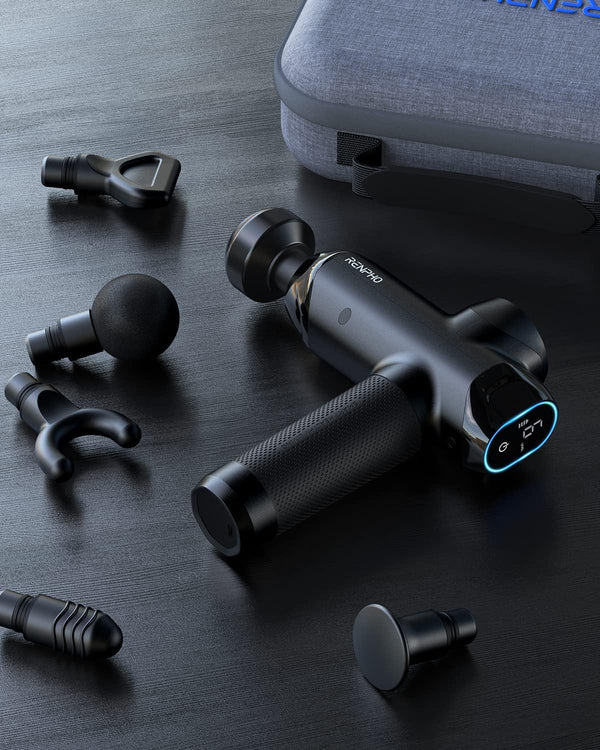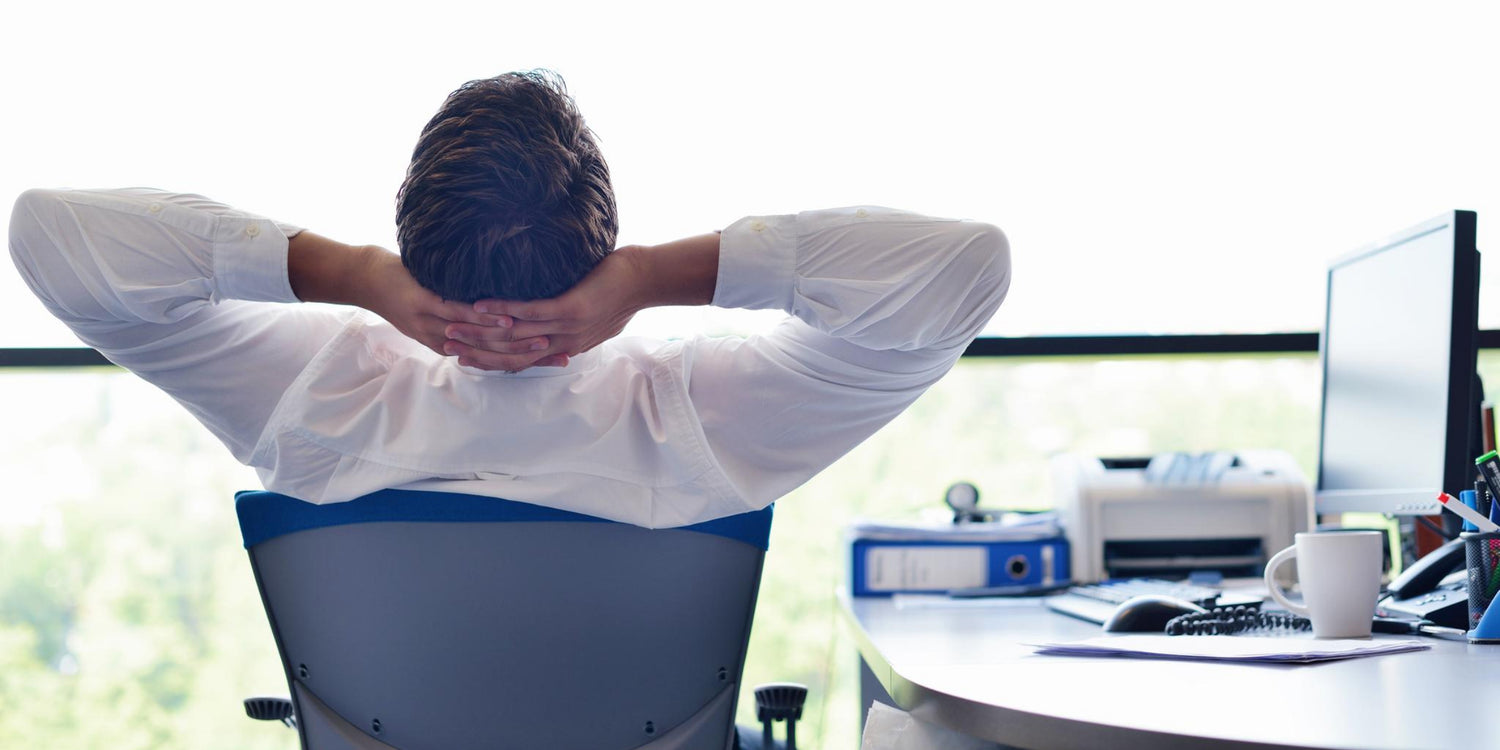In today's fast-paced world, many of us spend a significant portion of our days confined to desks, engrossed in the demands of office work. Long hours of sitting, repetitive tasks, and high levels of stress can take a toll on our bodies and overall well-being. It's no wonder that office workers often find themselves yearning for relief and rejuvenation.
But what if there was a way to transform the daily grind into a blissful experience? Enter compression massage—the secret weapon that can revolutionize the lives of office workers.
From alleviating muscle tension and improving circulation to reducing stress and enhancing mental clarity, compression massage has emerged as a powerful tool for promoting physical and mental well-being. Designed to target key areas of the body affected by prolonged sitting and repetitive motions, this therapeutic technique offers a multitude of advantages that can help office workers reclaim their vitality and find balance amidst their demanding work routines.
So, get ready to bid farewell to the discomforts of the office chair and embark on a journey towards rejuvenation and bliss. Let's explore how compression massage can empower office workers to thrive in both body and mind.
Why Are Desk Jobs Bad for Your Health?

Desk jobs are becoming increasingly prevalent today, but they may not be as good for our health as we think. Prolonged sitting, which is common in these types of jobs, can have negative effects on the body. One of the main issues associated with prolonged sitting is the increased risk of repetitive-motion ailments. Conditions such as carpal tunnel syndrome and tendinitis are more likely to occur when we spend long hours sitting at our desks, constantly engaging in the same repetitive movements.
In addition to these specific ailments, there is also a growing category of ergonomic disorders that can affect desk job employees. These disorders are caused by poor ergonomic setups, leading to discomfort and pain in various parts of the body, including the back, neck, shoulders, and wrists.
To combat these negative health effects, movement and circulation become crucial. Creating opportunities for movement throughout the workday can help reduce the risks associated with prolonged sitting. One effective solution is to use a standing or adjustable height desk. These types of desks allow for more movement, as they enable employees to alternate between sitting and standing positions. This change in posture encourages better circulation and can help prevent the development of repetitive-motion ailments and ergonomic disorders.
Can Compression Massage Be an Effective Solution for Sedentary Lifestyle?

Compression massage can be an effective solution for addressing the negative effects of a sedentary lifestyle. When you engage in prolonged periods of sitting or inactivity, it can lead to various health issues such as muscle tension, poor circulation, stiffness, and decreased flexibility. However, compression massage can help alleviate these problems by providing therapeutic benefits.
The process of compression massage involves applying pressure to specific areas of the body using compression sleeves or garments. These garments are designed to exert controlled pressure on the muscles and tissues. By doing so, compression massage stimulates blood flow and lymphatic circulation, which can reduce swelling, enhance oxygen and nutrient delivery to the muscles, and promote the removal of waste products.
There are several ways in which compression massage can effectively address the challenges of a sedentary lifestyle. Firstly, it helps relieve muscle tension by relaxing and releasing tension in the muscles, thereby reducing discomfort and promoting relaxation. Secondly, compression massage improves circulation by enhancing blood flow and preventing the onset of sluggish circulation and blood clots that can result from prolonged sitting. Thirdly, it can reduce swelling by stimulating the lymphatic system and facilitating the removal of excess fluid that accumulates in the legs and feet due to sedentary behavior.
Moreover, compression massage contributes to increased mobility and flexibility by reducing joint stiffness and improving range of motion. By promoting muscle relaxation and reducing stiffness, compression massage enables greater mobility. Additionally, it offers relaxation and stress reduction benefits, countering the elevated stress levels that can accompany a sedentary lifestyle.
However, it's essential to note that while compression massage can be beneficial, it should not replace regular physical activity and a comprehensive exercise routine. Incorporating movement, stretching, and exercise into your daily routine is crucial for fully combating the negative effects of a sedentary lifestyle.
What Are the Benefits of Compression Massage for Tight Muscles?
Compression massage is a highly effective technique for addressing tight muscles and providing a range of benefits for overall muscle health. By applying pressure to specific muscle groups, compression massage can help relieve muscle tension and improve blood circulation, leading to a sense of well-being.
First and foremost, compression massage works by targeting tight muscles and applying direct pressure to them. This pressure helps to lengthen and stretch the muscles, reducing tightness and promoting relaxation. This can be particularly beneficial for individuals who experience chronic muscle tightness or stiffness.
Additionally, compression massage stimulates blood circulation in the muscles. The pressure applied during the massage helps to enhance the flow of blood, oxygen, and nutrients to the muscles, promoting their overall health and functioning. Improved blood circulation also helps to remove waste products such as lactic acid from the muscles, reducing the risk of muscle soreness and fatigue.
Furthermore, compression massage can promote the release of endorphins, which are the body's natural painkillers and mood enhancers. The pressure applied during the massage triggers the release of these feel-good chemicals, leading to a sense of well-being and relaxation. This can be especially beneficial for individuals who experience stress, anxiety, or depression.
5 Types of Massage Techniques Used in the Workplace

In the fast-paced and demanding world of the workplace, it is crucial to prioritize the wellbeing of employees. One effective way to achieve this is through workplace massage, which offers numerous benefits for stress reduction and overall wellbeing. There are five main types of massage techniques commonly used in the workplace:
- Swedish Massage: This technique uses long, gliding strokes, kneading, and circular movements to relax and energize the body. It increases circulation and helps relieve muscle tension, promoting a sense of calm and rejuvenation.
- Deep Tissue Massage: Aimed at targeting deep layers of muscle and connective tissue, this technique uses slow, deliberate strokes to alleviate chronic tension and pain. It helps break down adhesions and improve range of motion, resulting in reduced stress and improved physical wellbeing.
- Shiatsu Massage: Originating from Japan, shiatsu involves applying pressure to specific points on the body using fingers, thumbs, and palms. It helps balance the body's energy flow, reduces muscle tension, and promotes relaxation, leading to enhanced wellbeing.
- Reflexology: Focusing on the feet, hands, and ears, this technique applies pressure to specific reflex points to stimulate various body organs and systems. By stimulating these reflexes, stress is relieved, and overall wellbeing is improved.
- Sports Massage: Often used to enhance performance and prevent injury, sports massage involves dynamic stretching and deep tissue techniques. It helps improve flexibility, reduce muscle soreness, and boost relaxation, benefiting employees' physical and mental health.
Implementing these massage techniques in the workplace can significantly reduce stress levels and improve overall wellbeing. By addressing muscle tension, promoting relaxation, and enhancing energy flow, employees are more likely to experience improved mood, enhanced productivity, and reduced stress-related health issues. Introducing workplace massage, such as corporate chair massage sessions, can be an effective investment in the physical and mental wellbeing of employees.
Takeaway
Compression massage is a powerful tool that can revolutionize the lives of office workers who spend long hours sitting at desks. It offers many benefits, including relieving muscle tension, improving circulation, reducing stress, and enhancing mental clarity. By targeting key areas of the body affected by prolonged sitting, compression massage helps office workers reclaim their vitality and find balance amidst their demanding work routines. It is important to note that while compression massage can be beneficial, it should not replace regular physical activity and exercise.
Implementing massage techniques in the workplace, such as Swedish massage, deep tissue massage, shiatsu massage, reflexology, and sports massage, can significantly reduce stress levels and improve overall well-being. These techniques address muscle tension, promote relaxation, and enhance energy flow, leading to improved mood, increased productivity, and reduced stress-related health issues. Introducing workplace massage, such as corporate chair massage sessions, is an effective investment in the physical and mental well-being of employees.
Renpho Health Tips
-

How Massage Guns Take Knee Pain Relief to the Next Level
April 25, 2024
Read more >
-

Embrace the Season: Discover the Magic of Autumn Essential Oils
April 8, 2024
Read more >
-

Joint Ventures: A Guide to Joint Pain-Soothing Foods
April 2, 2024
Read more >
-

Back Pain 101: Understanding the Factors Behind Your Aching Back
March 27, 2024
Read more >
-

Easing the Ache Down Under: The Guide to Massage Guns for Chronic Pain Relief
March 20, 2024
Read more >

